Coastal food options in Mumbai's restaurants are getting inspired makeovers, especially with vegetarian fare
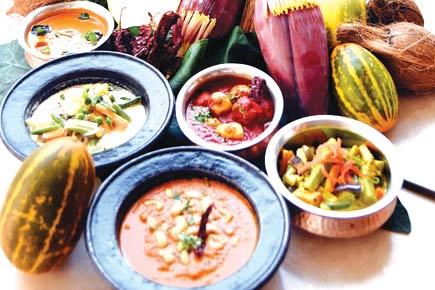
![]() If you are a vegetarian, you might have faced the conundrum at least once. When you make a request: ‘Veg mein kya milega?’ at a typical coastal restaurant, your options are paneer-substituted gravy or a hideous attempt with soya granules. But Mumbai’s restaurants seem to be turning a new leaf as far as experimentation with coastal food goes. “Unlike other parts of the world, Indians do not use non-vegetarian elements (like fish paste or non-vegetarian stock) as base of a dish, so vegetarian options are available in most cuisines. Coastal cuisine is a popular choice for vegetarian food due to the distinctive flavour of coconut and specially ground spices. It is also light unlike some vegetarian food in India,” reveals corporate chef Surender Mohan of The Leela, who has incorporated vegetarian versions of Caldine, Xacuti as well as traditional Foogath (vegetable tossed up with cabbage, carrot or beets) and the popular Goan Dal at the hotel’s Goan Food Festival, which is till the end of the month.
If you are a vegetarian, you might have faced the conundrum at least once. When you make a request: ‘Veg mein kya milega?’ at a typical coastal restaurant, your options are paneer-substituted gravy or a hideous attempt with soya granules. But Mumbai’s restaurants seem to be turning a new leaf as far as experimentation with coastal food goes. “Unlike other parts of the world, Indians do not use non-vegetarian elements (like fish paste or non-vegetarian stock) as base of a dish, so vegetarian options are available in most cuisines. Coastal cuisine is a popular choice for vegetarian food due to the distinctive flavour of coconut and specially ground spices. It is also light unlike some vegetarian food in India,” reveals corporate chef Surender Mohan of The Leela, who has incorporated vegetarian versions of Caldine, Xacuti as well as traditional Foogath (vegetable tossed up with cabbage, carrot or beets) and the popular Goan Dal at the hotel’s Goan Food Festival, which is till the end of the month.
ADVERTISEMENT
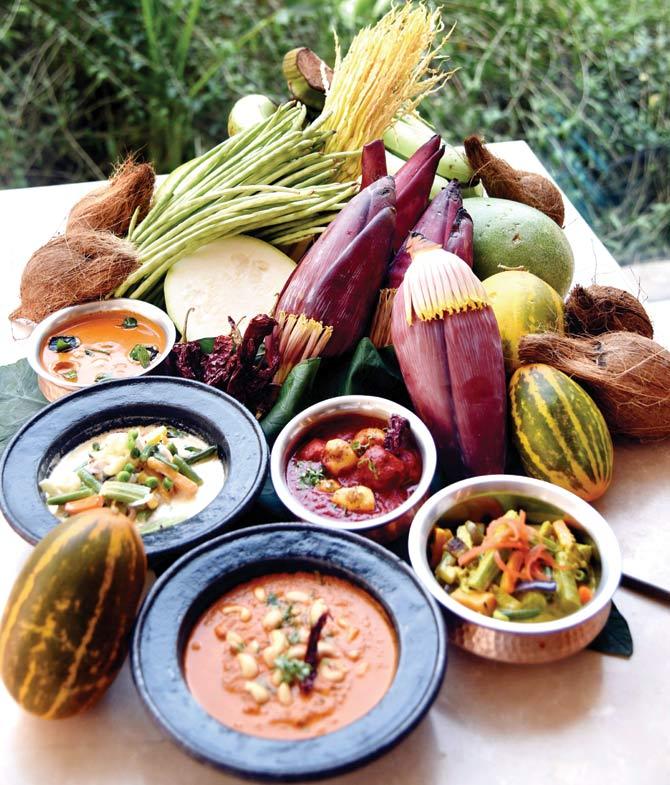
(Clockwise from top left) Mangalorean Alambe Hing Mirsang, Goan Potato Vindaloo, Bengali Shukto, Konkani Kaju Chi Amti and Kerala Pachkari Stelo are on the vegetarian menu at Saptami’s ongoing Coastal Food Festival. Pic/Sameer Markande
The same holds true for Bengali fare. “It’s a major misconception that Bengali food is all about fish and rice. Vegetables have always been an integral part of Bengali food. We start with fresh greens and once our appetite opens up, we hit meat and fish,” shares chef Gaurav Sircar of Trident — Bandra Kurla, who has helmed over 20 vegetarian options on the menu of Bong Connection, an ongoing Bengali food festival at the hotel.
Veggie wow
Due to fertile soil and abundant water resources, most coastal states are treasure troves of vegetables and spices, many native to a particular region. “Gongura leaves are only found only in Andhra Pradesh, and mainly used as a spice or chutney in Telugu cuisine,” informs Vidya Mehta, co-owner of Andhra cuisine hotspot Gonguura in Versova.
Each region also has its quirks that help distinguish flavours on the Indian coastal platter. While Orissa may borrow Panch Phoron from West Bengal, the technique with the five-spice mix is different. “The mix is mainly used in Santula, a dish made with finely chopped vegetables is slow cooked in their juices and tempered with Panch Phoron and garlic,” informs home chef Ananya Banerjee, Mumbai’s only home chef who hosts Oriya cuisine pop-ups.
Gujarat’s coastal belt, known as the Kathiawar region, relies on dairy products due to lack of vegetation in the dessert terrain. “Buttermilk is an important accompaniment in every meal and yoghurt is used in a typical Gujarati kadhi,” shares Gautam Purohit of Thaker Bhojanalay.
In contrast, Konkan fare gives dairy products a miss. “Konkani cuisine uses coconut in various forms, like grated, dry grated, fried, coconut paste and coconut milk too. Ghee is commonly used in cooking while heavy cream and yoghurt are not,” informs Sudhir Pai, Executive Chef, Holiday Inn Mumbai International Airport that currently hosts a coastal food festival with vegetarian options from Maharashtra, Tamil Nadu, Kerala, Goa and West Bengal.
Same difference
With such diversity, it isn’t surprising to taste different flavours within the same state, like in Tamil Nadu. Chef E Munichandrudu, Specialty South Indian, Sofitel Mumbai BKC, says, “The palate of the people there varies from region to region. While Chettinad cuisine is extremely spicy, Kanchipuram uses milder flavours in their traditional food. They cut the use of spices with tamarind juice and jaggery.”
Foreign connect
With their proximity to the Western Hemisphere, the South and West coast have been influenced by non-Indian ingredients as well. “The Sumerians, Arabs, Persians, Portuguese, Dutch and English came to Konkan shoreline to trade and to conquer new lands. Before the British, the Portuguese made the greatest contribution to Konkan’s culinary landscape as they brought with them potatoes (batata: Marathi), apart from red chillies, vinegar, tomato, papaya, corn, capsicum, cashews and sweet potatoes. Today, you cannot imagine a Konkani summer without roasted corn,” shares Pai.
Meanwhile, the geographical connect with the sea has also offered India a chance to infuse Indian coastal spices in world cuisine. “Thalassery black pepper (found in Kerala) changed the culinary
landscape of traders who took such spices to faraway lands, and introduced pepper into European fare,” elaborates Munichandrudu.
Gujarat
Specials: Sev Gathiya, Bajri (pearl millet) Na Rotla, Chhaas and Gujarati Kadhi.
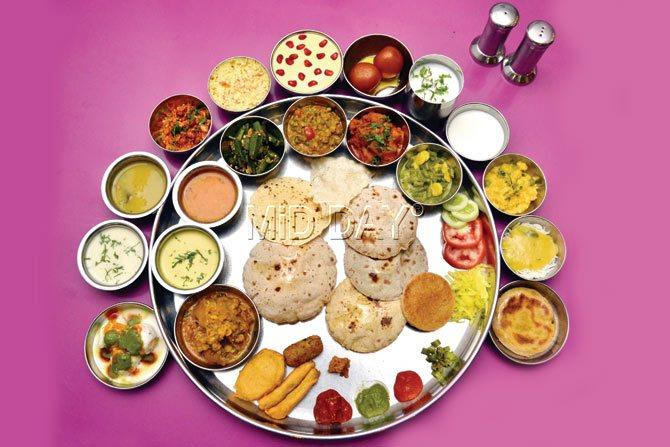
Pic/Datta Kumbhar
Technique: With gram flour or yoghurt as the base, many dishes are slow cooked with basic spices like cumin seeds and turmeric.
*Information courtesy: Gautam Purohit
Maharashtra
Specials: Kaju Chi Amti (in pic), Ussal, Tondli Bhaji and Sandans made with fruit and lentil batter.
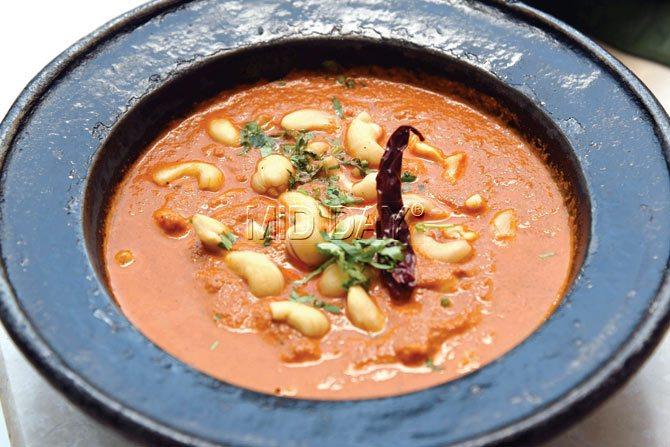
Pic: Sameer Markande
Technique: Typical ingredients include coconut (pan-roasted, deep fried or as milk), dried red chillies, kokum, dried kokum (amsul), tamarind and raw mango along with banana flower, raw jackfruit, bread fruit, colocasia leaves, amla and long beans.
Dhuvan, a smoking apparatus layered with hot coals, soaked in coconut oil, is used to slow-roast eggplant and pumpkins.
*Information courtesy: Chef Sudhir Pai
Orissa
Specials: Pokhal Bhaat (leftover rice fermented with water, in pic) eaten with Shaak Bhaaja (stir-fried greens with garlic and salt) and Bodi Chura (a mixture of fried lentil balls and garlic). Dalma, a dal cooked with bengal gram and veggies is crucial.
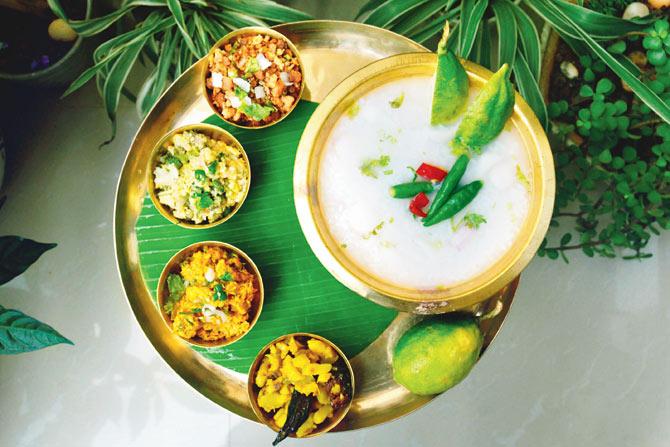
Technique: Most dishes include garlic with other ingredients like taro root, raw banana, potatoes, brinjal, etc.
*Information courtesy: Ananya Banerjee
West Bengal
Specials: Shukto (a mixed vegetable curry with bitter gourd, sweet potatoes and brinjal), Aloo Jhinge Posto (ridge gourd with poppy seeds), Doi Potol (parwal simmered in yoghurt gravy) and Dhokar Dalna (a split gram cake in onion tomato gravy, in pic).
Technique: Steaming, frying and stewing. Poppy seeds are paired with ridge gourd and potatoes, Radhuni (like celery seeds) is the key ingredient of Shukto, Kalo Jeere (black onion seeds) are used to temper lentils and Panch Phoran (mix of fennel, fenugreek, cumin, radhuni and kalo jeere) is integral.
*Information courtesy: Chef Gaurav Sircar
Goa
Specials: Foogath (cabbage, green beans, beetroot vegetable) Goan Dal (made with masur, coconut milk and tamarind).
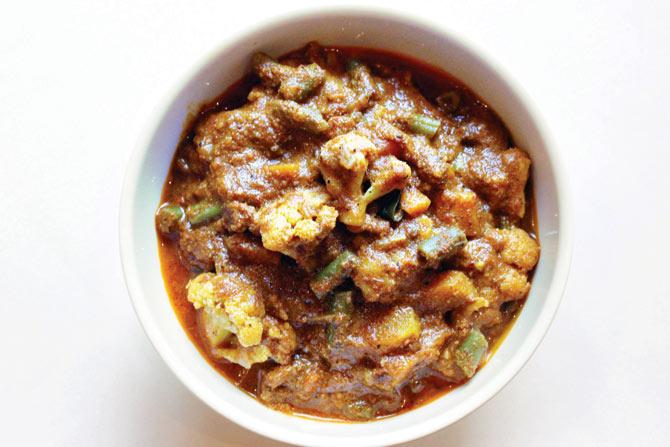
Technique: The vegetarian versions of Vindaloo, Caldin and Xacuti (in pic) is substituted with potatoes, banana flowers, and yam. Okra is prepared with coconut, tamarind and spices into gravy, which is rare to find elsewhere in India.
*Information courtesy: Chef Surender Mohan
Karnataka
Specials: Alambe Hing Mirsang (Mangalorean Mushroom Curry), Bisibele rice, Jolada Roti (made of jowar), Akki Rott, Saaru (soup traditionally prepared using tamarind juice, tomato, chilli pepper, pepper and cumin) and Vangi Bhaat.

Pic/Sameer Markande
Technique: Ingredients like jowar, tender bamboo shoots, colocasia leaves, turmeric leaves, and raw jackfruit are easily found in the Sahyadri.
Kerala
Specials: Kolakottai (stuffed masala rice steamed cake), Pachor (rice and lentil cooked with jaggery and coconut; in pic) and Malabar Sambar (spicy vegetable and lentil broth).

Technique: Food is cooked in clay pots, steamed or simmered with very less oil. Several dishes are served with a popular ginger-tamarind pickle known as Puliinji or Injipuli.
Tamil Nadu
Specials: Idli-sambar, Kothamalli Rava Upma (semolina cooked with fresh coriander sauce and spices, in pic), Kuzhi Paniyaram (steamed moulded dosa/idli, either sweet or spicy) and Urulai Mochai Kurma (a curry made with lima beans and potatoes).
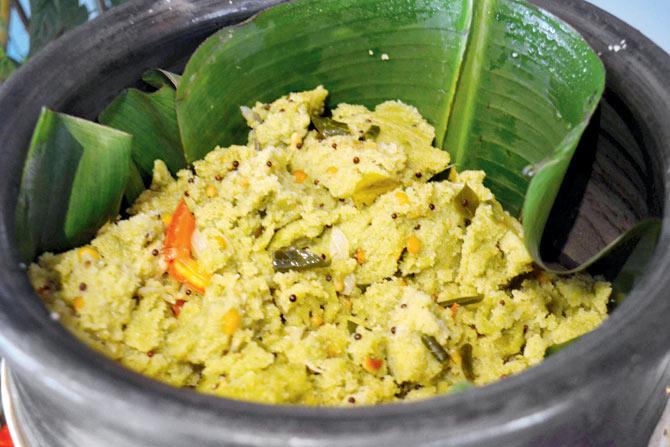
Technique: Similar to other Southern states.
*Information courtesy: Chef E Munichandrudu
Andhra Pradesh
Specials: Idli-sambar, Kothamalli Rava Upma (semolina cooked with fresh coriander sauce and spices, in pic), Kuzhi Paniyaram (steamed moulded dosa/idli, either sweet or spicy) and Urulai Mochai Kurma (a curry made with lima beans and potatoes).
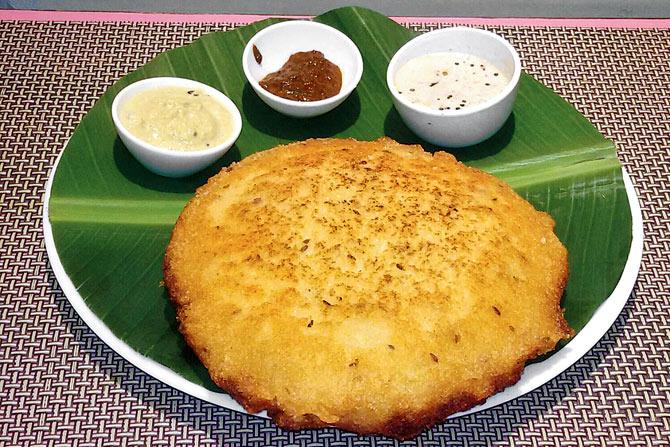
Technique: Similar to other Southern states.
*Information courtesy: Chef E Munichandrudu
Where to tuck into vegetarian coastal fare
>> Enjoy Konkani, Goan, Mangalorean and Malabari fare.
Till November 22, 7.30 pm, At Saptami, Holiday Inn Mumbai International Airport, Andheri (E). Call 40851800
>> Relish rotational state-specific cuisine from South India.
On Sundays, 7 am to 11 am, At Tuskers, Sofitel Mumbai BKC, Bandra Kurla Complex. Call 61175000
>> Indulge in traditional Goan fare.
Till November 30 At The Citrus, The Leela Mumbai, Andheri (E). Call 66911359
>> Tuck into vegetarian West Bengali platter at this festival.
Till November 27, At Maya, Trident — Bandra Kurla. Call 66727777
>> Get a taste of vegetarian Andhra fare.
At Gonguura, Juhu Versova Link Road, Andheri (W). Call 26233052
 Subscribe today by clicking the link and stay updated with the latest news!" Click here!
Subscribe today by clicking the link and stay updated with the latest news!" Click here!






